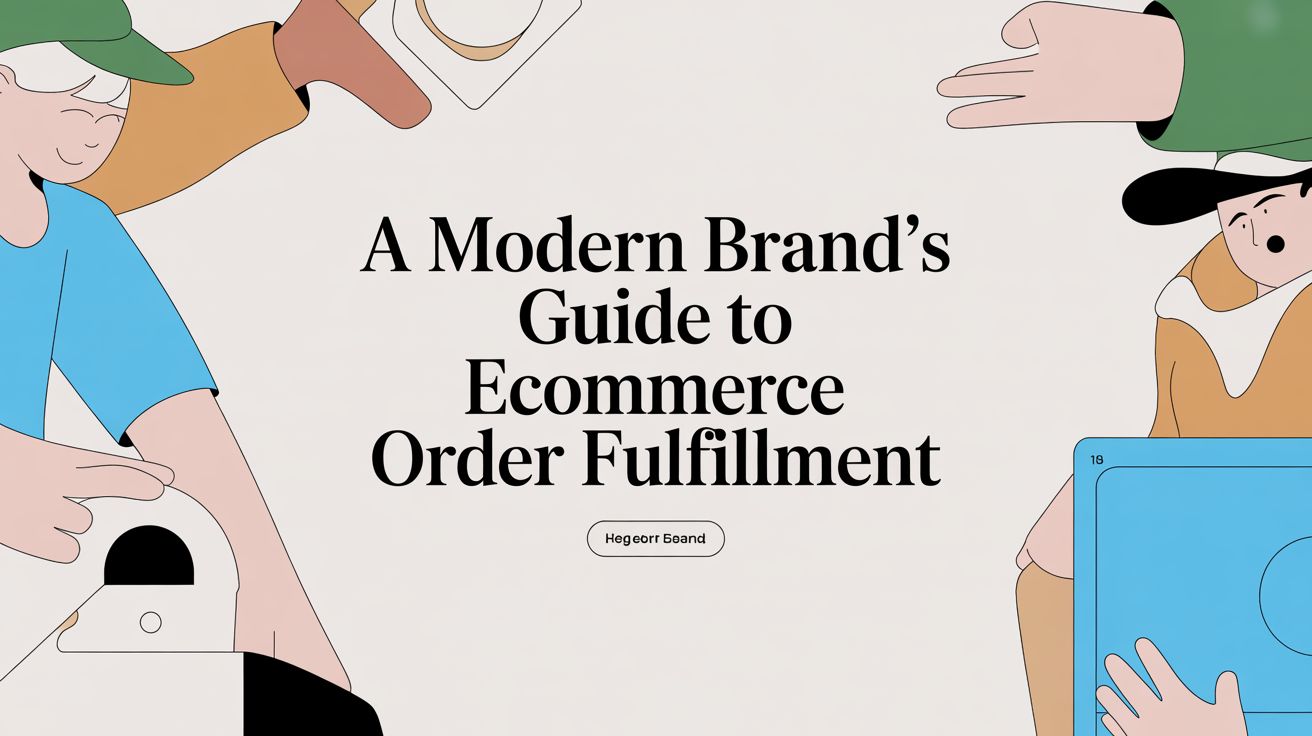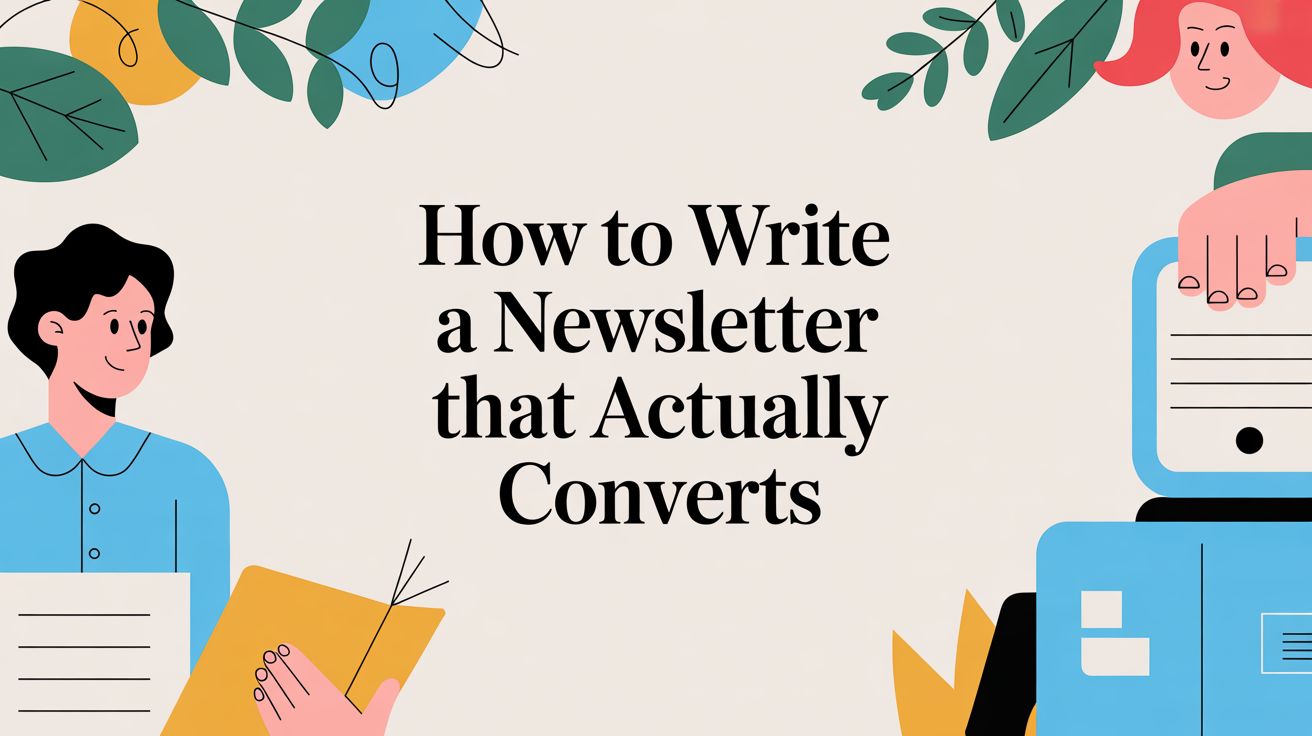
How to Increase Customer Engagement: 7 Quick Wins That Drive Revenue
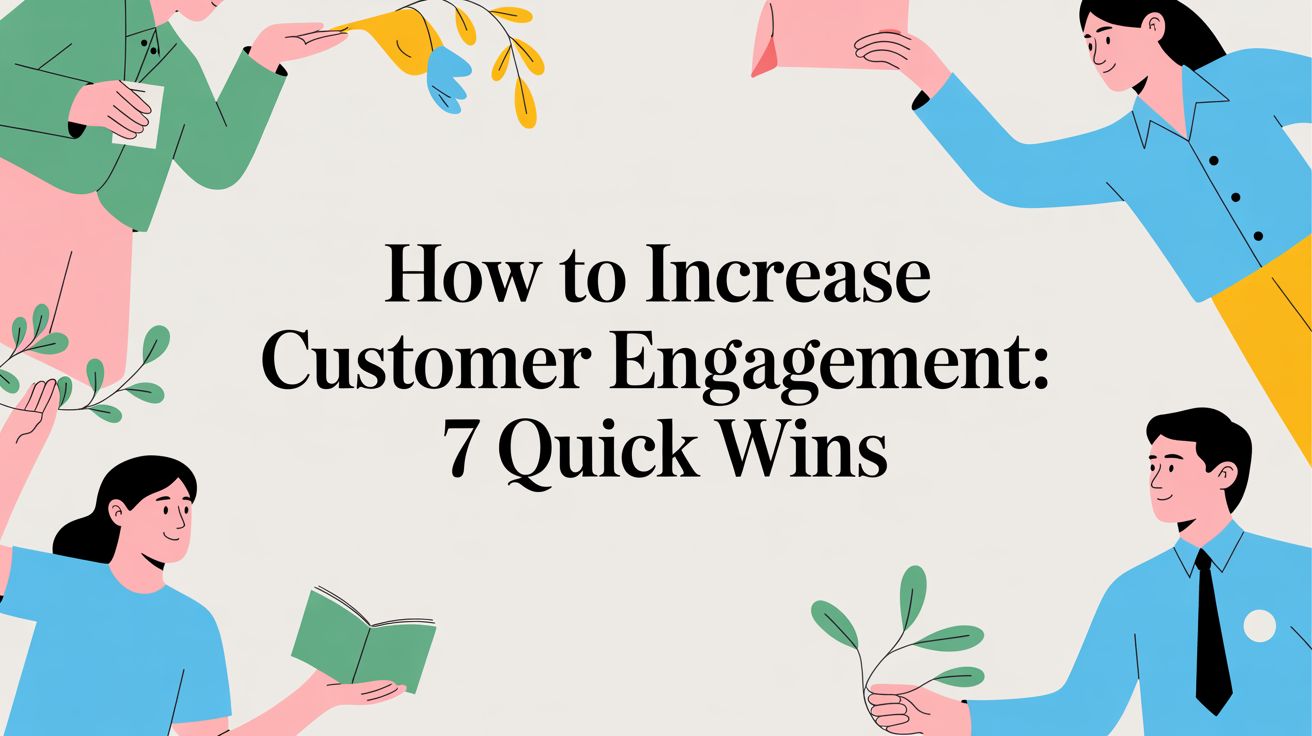
Boosting customer engagement is about creating genuine interactions that build loyalty and drive revenue. It’s about moving past a simple transaction to a long-term relationship. When you ground your strategy in proven psychological principles like scarcity, social proof, and anticipation, you forge a powerful connection with your audience, turning first-time buyers into high-value, lifelong fans.
Why Basic Timers Fail to Engage Modern Shoppers
The standard countdown timer is a relic of a simpler e-commerce era. While it may have created a novel sense of urgency a decade ago, today’s shoppers are far more sophisticated. They often recognize it as a generic, low-effort tactic.
A blinking clock simply yells "buy now" without providing a compelling psychological reason why. This approach can feel more manipulative than helpful, which is precisely why these basic tools fall flat. They lack the depth needed for true engagement, often focusing on a single, limited goal: capturing an email address. Many simple popup and banner apps interrupt the shopping journey for a quick email grab, missing the larger opportunity to guide the shopper, add value, and build excitement throughout their entire experience. This tactic prioritizes lead capture over actual revenue generation.
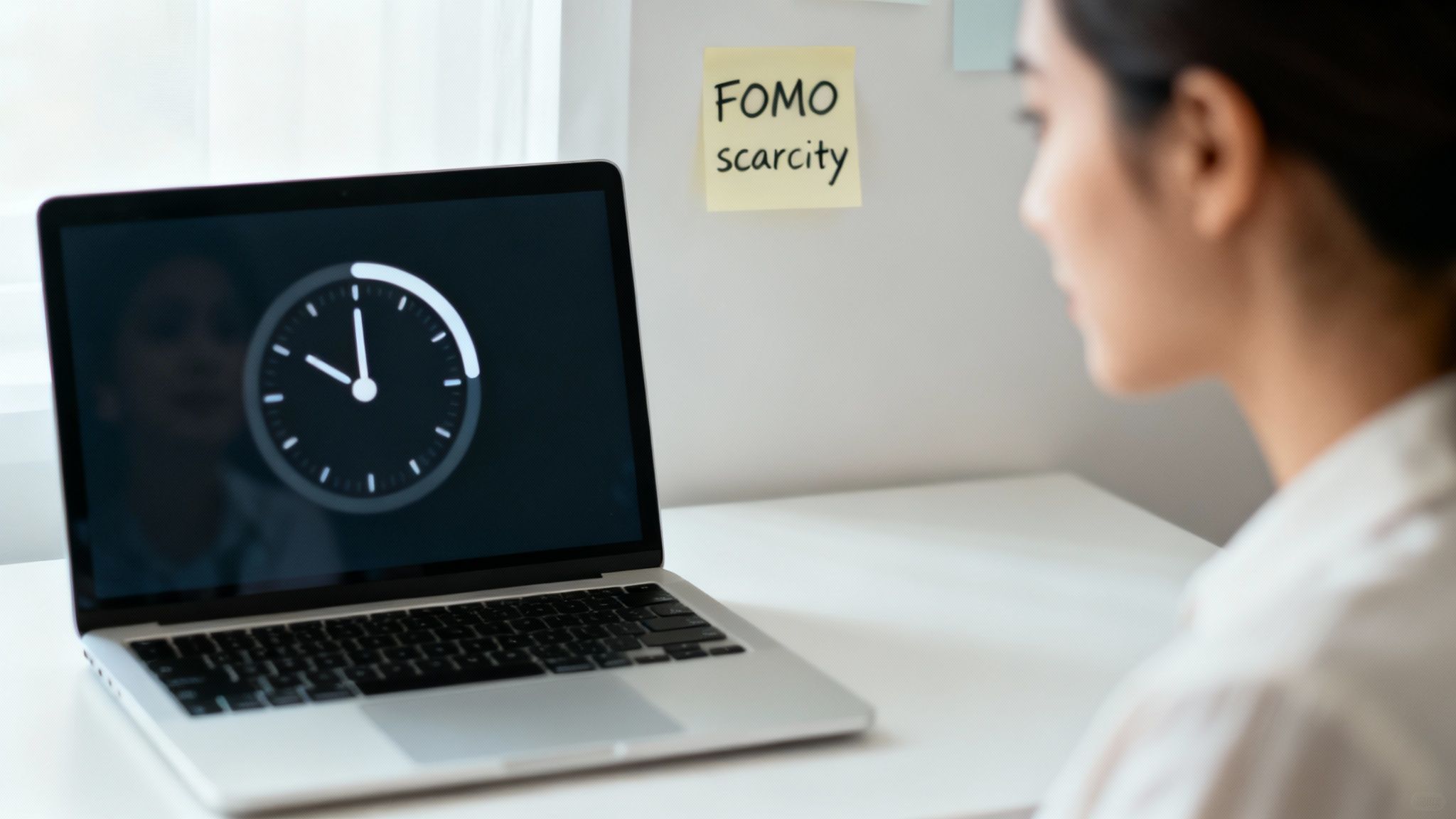
Moving Beyond the Clock: The Science of Urgency
Effective engagement isn’t about just starting a timer; it's about understanding why urgency works. The science is rooted in proven principles from behavioral economics and consumer psychology. When used thoughtfully, urgency becomes a powerful tool for connection, not just a blunt instrument for conversion. It’s the difference between unsophisticated pressure and sophisticated persuasion.
Here’s where a more advanced, psychology-driven approach shines:
- Scarcity: Instead of an arbitrary deadline, true scarcity highlights a genuinely limited resource—"Only 5 left in your size." This taps into our deep-seated desire for things that are rare and exclusive.
- Social Proof: A simple timer is a lonely experience. Advanced engagement tools leverage social proof with messages like, "15 other people have this in their cart," tapping into our natural tendency to follow the crowd.
- Anticipation: Rather than a sudden, jarring popup, you can build anticipation for an upcoming product drop or a limited-time offer. This transforms a transaction into an exciting event that customers look forward to.
The Real Cost of Poor Engagement
When you fail to connect meaningfully with customers, it directly impacts your revenue and brand perception. Consumer expectations have skyrocketed. A recent study found that 72% of customers will switch to a competing brand after just three or fewer subpar interactions. You can read more about these customer experience findings and what they mean for your business. The average e-commerce conversion rate hovers around 2.5%, and with cart abandonment rates near 70%, every missed opportunity to engage is a direct loss of revenue.
By focusing on the psychological triggers behind a purchase, you shift from simply pushing a sale to enhancing the shopper’s journey. This protects profit margins by avoiding site-wide discounts and boosts revenue by converting high-intent customers more effectively.
Crafting High-Impact Engagement Moments in Shopify
Moving from theory to practice is where you see the impact on your revenue and inventory management. Forget generic, sitewide campaigns. The most successful Shopify merchants architect strategic, triggered experiences. At Quikly, we call these "Moments."
These aren't random popups. They are carefully timed interactions, designed to create genuine urgency based on specific shopper behavior. This represents a massive leap from the manual babysitting that basic apps demand. We're talking about sophisticated automation that understands a customer's journey and intervenes at the perfect time, making the interaction feel less like a sales pitch and more like a helpful, exclusive tip-off.
Using Behavioral Triggers to Drive Action
The secret to engagement that drives revenue is relevance. You must meet the customer where they are. Using specific actions a shopper takes on your Shopify store, you can launch highly personalized banners and popups that resonate. It's a world away from a basic countdown timer that shows the same deal to every visitor.
Here are some actionable takeaways you can implement:
- Cart Value Trigger: A shopper’s cart hits $95. Instead of letting them walk, trigger a banner: "You're almost there! Free shipping on orders over $100 for the next 15 minutes." This simple incentive to add one more item directly increases your Average Order Value (AOV).
- Time on Page Trigger: Someone is lingering on a product page for over 60 seconds. They're interested, but hesitant. A well-timed popup saying, "Looks like you're a fan! Only 7 of these left in stock," leverages scarcity and can be the final nudge they need to convert.
- Purchase History Trigger: A customer who bought running shoes last month is back on your site. Trigger a "first look" offer on your new collection of athletic apparel. This doesn't just reward loyalty; it makes the shopper feel seen and understood.
Building a Seamless Omnichannel Experience
Your engagement strategy cannot exist only on your website. To maximize ROI, these triggered Moments must connect seamlessly with all your marketing channels. This is where integrations with tools like Klaviyo and SMS platforms like Attentive become critical, especially for Shopify Plus merchants aiming to scale.
Consider this scenario for a high-value customer who adds a limited-edition jacket to their cart but gets distracted.
An hour later, an automated workflow triggers a personalized SMS: "Hi Sarah, the jacket you liked is almost sold out. We've held it for you for 20 more minutes. Complete your purchase now."
This creates a powerful, cohesive experience that follows the customer to the channels where they're most active. This multi-channel approach turns a single website visit into an ongoing, engaging conversation. The result? You drive immediate sales and accelerate turnover for your most in-demand items, positively impacting your inventory management.
Using Personalization and AI to Deepen Connections
The generic “limited-time only” banner no longer cuts it. It has become background noise. To truly boost customer engagement, you must move beyond one-size-fits-all tactics and deliver experiences that feel uniquely tailored to each shopper.
This is where artificial intelligence, combined with a solid understanding of consumer psychology, becomes a game-changer.
AI gives brands an almost uncanny ability to predict shopper intent. It analyzes behavioral data—browsing history, past purchases, even mouse movement—to understand a customer's needs, sometimes before they are consciously aware of them. This allows you to deliver the perfect urgency-based offer at the precise right moment, transforming an interruption into a genuinely helpful nudge.
Moving From Data to Actionable Insights
Many brands are sitting on a mountain of customer data but are not effectively using it. This is the "personalization gap," and intelligent automation is the bridge. Instead of spending hours manually segmenting your audience, AI-powered platforms can create one-to-one moments of engagement at a scale previously impossible.
Personalization is a core component of modern business strategy. Personalized experiences are proven to boost retention and customer satisfaction. You can see the latest trends on closing the personalization gap to understand how quickly this field is evolving.
Tailoring Urgency with Behavioral Triggers
True personalization means deploying different "Moments" for different customers based on their journey and value to your brand. This surgical approach protects profit margins while increasing revenue from high-intent shoppers.
The infographic below highlights key behavioral triggers that AI can use to create these personalized moments.
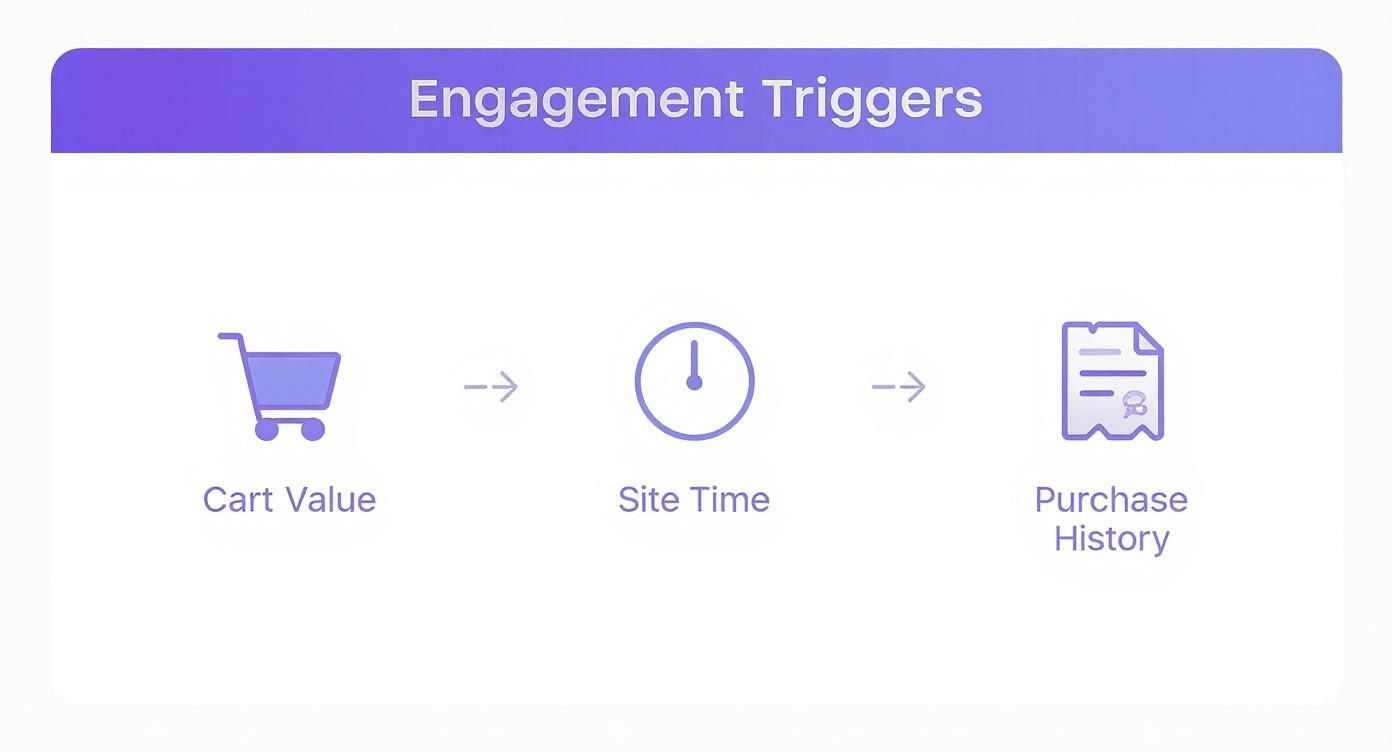
This data allows for incredible specificity. You can offer a small discount to someone whose cart is just shy of the free shipping threshold or display a low-stock alert to a loyal customer eyeing a bestseller.
Consider these practical examples:
- For the new visitor: An AI-powered banner could highlight your most popular, best-reviewed products to build immediate social proof and trust.
- For the loyal VIP: A personalized email might grant them exclusive early access to a new collection 24 hours before anyone else. This isn't just a promotion; it's a reward that deepens loyalty.
- For the hesitant browser: A visitor who returns to the same product page three times in a week could receive a gentle, time-sensitive nudge for that specific item, triggered by analytics flagging their high purchase intent.
This level of detail transforms urgency from a blunt marketing instrument into a personalized concierge service. By aligning offers with individual behavior, you make each interaction feel helpful and exclusive, building a genuine brand connection that extends far beyond a single transaction. It’s also a powerful tool for your email strategy, and you can explore more ways of implementing personalization with your email marketing in our detailed guide.
Basic Timers vs. AI-Powered Urgency Moments
Not all urgency tools are created equal. Many brands start with a simple countdown timer app, but the real power lies in a more dynamic, intelligent approach grounded in behavioral science.
Here's how a basic app compares to a sophisticated, AI-driven platform.
| Feature | Basic Countdown Timer App | AI-Powered Moments |
|---|---|---|
| Personalization | Generic; same timer for all visitors | 1-to-1; tailored to individual user behavior and history |
| Triggers | Page load or site-wide rules | Behavioral triggers (cart value, exit-intent, visit frequency) |
| Timing | Fixed duration (e.g., 24 hours) | Dynamic; optimized for the "perfect moment" of influence |
| Offer | Static offer (e.g., 10% off) | Dynamic offers based on customer value and intent |
| Business Impact | Can increase conversions but may devalue the brand | Maximizes revenue, protects margins, and builds loyalty |
| Psychological Hook | Simple scarcity (time is running out) | Sophisticated triggers (exclusivity, social proof, loss aversion) |
While a basic timer may provide a quick win, an AI-powered approach builds a smarter, more sustainable engagement strategy that resonates with customers on an individual level, creating value instead of just pressure.
Measuring the True ROI of Your Engagement Strategy
Engagement without a clear financial return is a vanity metric. To truly understand how to increase customer engagement, you must look past surface-level numbers like clicks and focus squarely on the bottom line.
The success of a sophisticated urgency strategy is measured in tangible revenue growth, the protection of profit margins, and smarter inventory management, not just conversion rates.
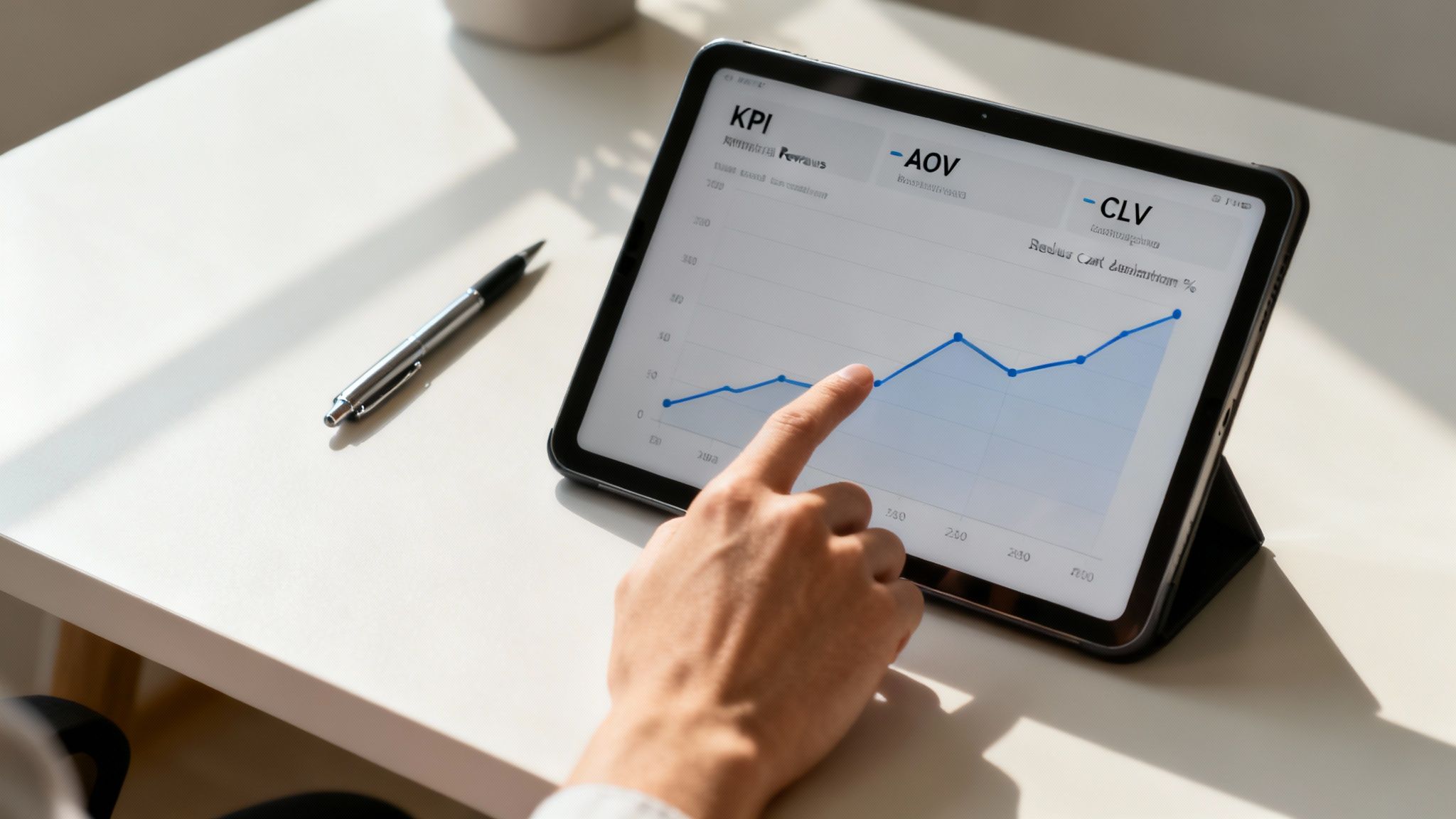
A basic pop-up might capture a few emails, but a well-executed engagement "Moment" directly impacts your store’s financial health. It shifts the conversation from "did they convert?" to "how much profitable revenue did that conversion generate?"
That shift separates short-term tactics from a long-term revenue strategy.
Key Metrics Beyond the Conversion Rate
To get the full picture, you need to track metrics that reflect both immediate sales and long-term customer relationships. These data points reveal the power of using psychological triggers to enhance the shopping journey.
Here are the core metrics to monitor:
- Average Order Value (AOV): Strategic urgency, like a time-sensitive offer for free shipping, encourages customers to add more to their carts. Tracking the lift in AOV during these campaigns shows a direct, dollar-for-dollar impact on revenue per transaction.
- Reduced Cart Abandonment: With industry cart abandonment rates hovering around 70%, even a small reduction creates a significant revenue boost. Triggered exit-intent offers based on cart value or specific items can recover sales that would have otherwise been lost.
- Customer Lifetime Value (CLV): This is the ultimate measure of a healthy customer relationship. A crucial aspect of your strategy is understanding how to calculate Customer Lifetime Value. Rewarding loyal customers with exclusive, time-sensitive offers fosters the repeat business that drives CLV higher.
Protecting Margins and Managing Inventory
One of the most powerful benefits of a targeted engagement strategy is its ability to protect profit margins.
Instead of resorting to site-wide, margin-killing discounts to move excess inventory, you can deploy surgical strikes.
For example, you could create a limited-quantity offer for a slow-moving product. But instead of promoting it to everyone, you target only a customer segment that has shown interest in similar items. This approach clears stock efficiently without devaluing your brand or sacrificing profitability. You’re not just selling a product; you're creating a targeted sales event.
By continuously A/B testing different psychological triggers—scarcity vs. social proof, for example—you can pinpoint what resonates most with specific audience segments. This optimization ensures every campaign is more effective than the last, creating a clear and measurable financial return.
Turning Urgency into Long-Term Customer Loyalty
It's easy to view urgency marketing as a quick hit for a single sale. But that’s a shortsighted perspective that misses the bigger opportunity.
When you ground your strategy in real behavioral science, urgency becomes a powerful engine for turning one-time buyers into genuine brand fans. The key is to shift focus from generic pressure to creating exclusive, valuable experiences for your most important customers. This is how you use urgency to build loyalty, not just convert a sale.
Reward Loyalty with Exclusivity
Instead of a sitewide flash sale that treats every visitor the same, what if you offered your VIP customers 24-hour early access to a new product drop? This simple move taps into two powerful psychological drivers:
- Scarcity: The product is available only to a select few before anyone else.
- Anticipation: You build excitement around the release, making it feel like an exclusive event.
This approach strengthens a customer's emotional connection to your brand. The offer isn't just a discount; it's a reward that says, "We see you, and we value you." This builds a two-way relationship where customers feel genuinely invested in your success, leading to higher repeat purchase rates.
Customer loyalty is a major battleground. The global loyalty management market is expected to skyrocket, showing how critical effective retention strategies are. You can dig into more insights about the rise of loyalty programs at Antavo.com.
Balance Automation with Authentic Messaging
Building this long-term relationship requires a careful balance. You can use sophisticated automation to trigger these exclusive moments—for instance, by automatically sending an early access link through a platform like Klaviyo or your SMS provider to your "VIP" segment.
But the messaging must feel human, authentic, and empathetic. The goal is to make the customer feel like an insider, not just a contact in an automated flow.
Frame these moments as genuine perks. Use language like, "As a thank you for being one of our best customers, you're getting first dibs." This simple shift in tone transforms a marketing tactic into a cornerstone of your retention strategy.
By using urgency to create moments of delight and exclusivity, you move beyond simple transactions. You build an engaged community that not only buys more frequently but also becomes a powerful source of word-of-mouth marketing.
Common Questions About Urgency and Engagement
As you move beyond basic timers to a more sophisticated approach to customer engagement, a few questions naturally arise.
Let's address the most common concerns from merchants adopting these powerful strategies.
Will Using Urgency Marketing Make My Brand Seem Manipulative?
This is a valid concern. The answer depends entirely on how you implement it.
Generic, site-wide countdown timers can feel manipulative because they lack context. But when you ground urgency in personalization and genuine value, it ceases to be about pressure and becomes a tool to increase customer engagement.
When you use behavioral data to offer a loyal customer early access or send a limited-time deal on an item they’ve been eyeing, the interaction feels exclusive and helpful, not desperate. The key is authenticity. You are not forcing a sale; you are adding value to their experience, which builds excitement and protects your brand’s integrity.
How Can I Implement These Strategies on Shopify Without Being a Developer?
You don’t need to be a developer. Modern platforms are built to solve this exact problem. Advanced engagement tools are designed to integrate seamlessly with Shopify and Shopify Plus, providing a user-friendly way to create sophisticated "Moments" without writing a single line of code.
You can easily set up behavioral triggers, design on-brand banners, and connect everything to your existing marketing stack—whether that’s Klaviyo or Attentive. It's all managed through intuitive dashboards. The purpose is to provide powerful automation you can control, enabling you to launch campaigns that once required a development team.
These tools are built to empower merchants, not intimidate them. They handle the technical heavy lifting so you can focus on crafting the perfect message for the right customer at the right moment.
How Is This Different from Just Running a Standard Flash Sale?
A standard flash sale is a sledgehammer. You blast it to everyone, it's typically site-wide, and it can train customers to wait for discounts, eroding your profit margins.
Strategic, behavior-driven urgency is a scalpel. It’s precise.
Instead of a mass discount, you’re creating personalized, limited-time events for specific customer segments based on their actions. This could be a price drop alert for a cart abandoner or a low-stock notification for a high-intent shopper.
This targeted approach not only protects your margins by avoiding unnecessary discounts but is also far more effective at converting high-value customers. You’re delivering a message that feels tailor-made, which deepens their connection to your brand.
Ready to move your engagement strategy from generic to genuinely effective? Quikly is the expert in urgency marketing science, giving you the tools to create sophisticated, psychology-backed urgency moments that boost revenue, enhance banners and popups, and build lasting customer loyalty. Discover how Quikly can elevate your Shopify store.

The Quikly Content Team brings together urgency marketing experts, consumer psychologists, and data analysts who've helped power promotional campaigns since 2012. Drawing from our platform's 70M+ consumer interactions and thousands of successful campaigns, we share evidence-based insights that help brands create promotions that convert.
